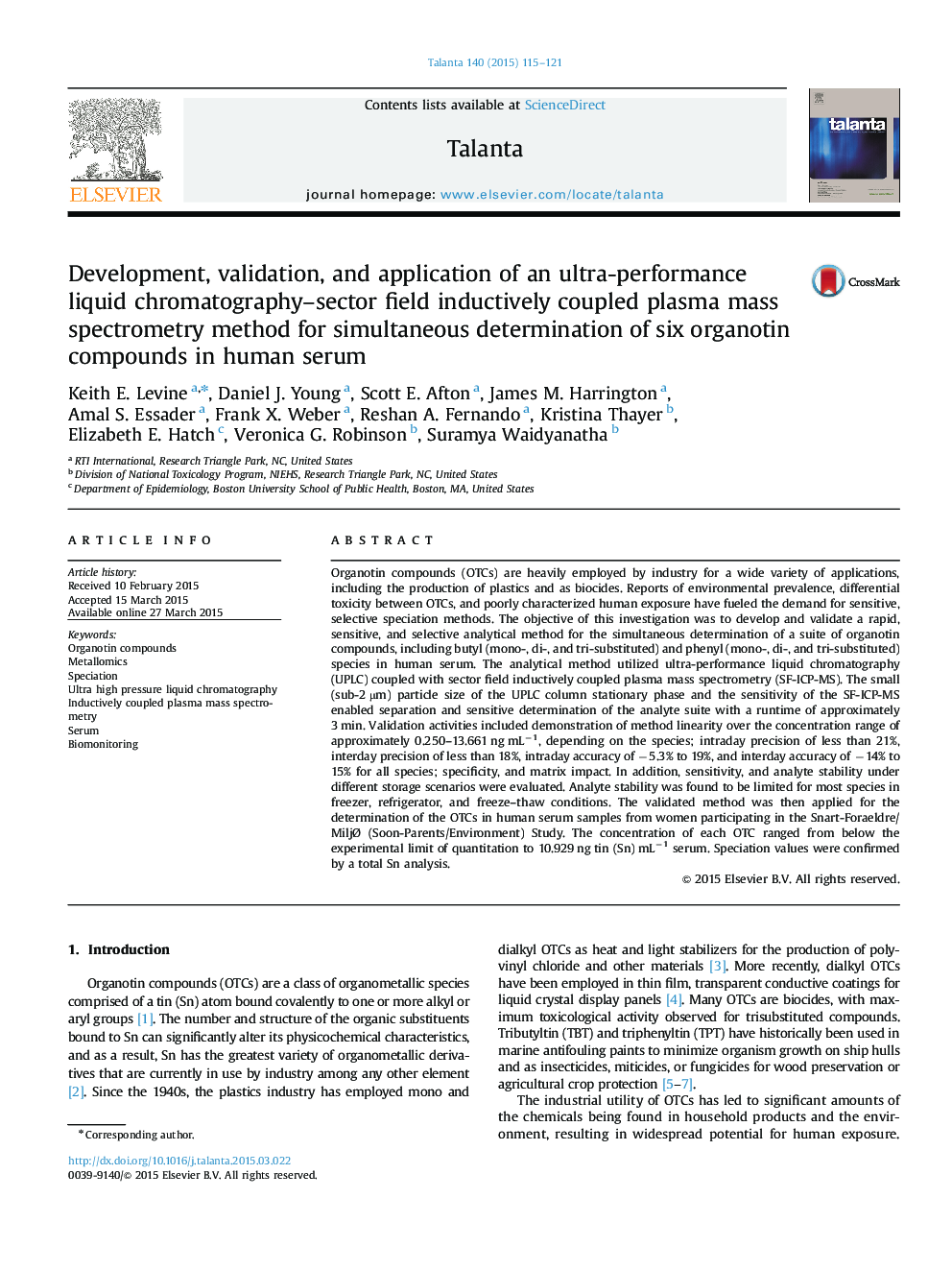| Article ID | Journal | Published Year | Pages | File Type |
|---|---|---|---|---|
| 1243066 | Talanta | 2015 | 7 Pages |
•We describe a sensitive, selective method for tin speciation in human serum.•UPLC separation resolved butyl and phenyl tin species in approximately 3 min.•Method validation established linearity and precision/accuracy over several days.•Sensitivity and analyte stability under different storage scenarios were evaluated.•Validated method was applied to human biomonitoring study.
Organotin compounds (OTCs) are heavily employed by industry for a wide variety of applications, including the production of plastics and as biocides. Reports of environmental prevalence, differential toxicity between OTCs, and poorly characterized human exposure have fueled the demand for sensitive, selective speciation methods. The objective of this investigation was to develop and validate a rapid, sensitive, and selective analytical method for the simultaneous determination of a suite of organotin compounds, including butyl (mono-, di-, and tri-substituted) and phenyl (mono-, di-, and tri-substituted) species in human serum. The analytical method utilized ultra-performance liquid chromatography (UPLC) coupled with sector field inductively coupled plasma mass spectrometry (SF-ICP-MS). The small (sub-2 µm) particle size of the UPLC column stationary phase and the sensitivity of the SF-ICP-MS enabled separation and sensitive determination of the analyte suite with a runtime of approximately 3 min. Validation activities included demonstration of method linearity over the concentration range of approximately 0.250–13.661 ng mL−1, depending on the species; intraday precision of less than 21%, interday precision of less than 18%, intraday accuracy of −5.3% to 19%, and interday accuracy of −14% to 15% for all species; specificity, and matrix impact. In addition, sensitivity, and analyte stability under different storage scenarios were evaluated. Analyte stability was found to be limited for most species in freezer, refrigerator, and freeze–thaw conditions. The validated method was then applied for the determination of the OTCs in human serum samples from women participating in the Snart-Foraeldre/MiljØ (Soon-Parents/Environment) Study. The concentration of each OTC ranged from below the experimental limit of quantitation to 10.929 ng tin (Sn) mL−1 serum. Speciation values were confirmed by a total Sn analysis.
Graphical abstractFigure optionsDownload full-size imageDownload as PowerPoint slide
